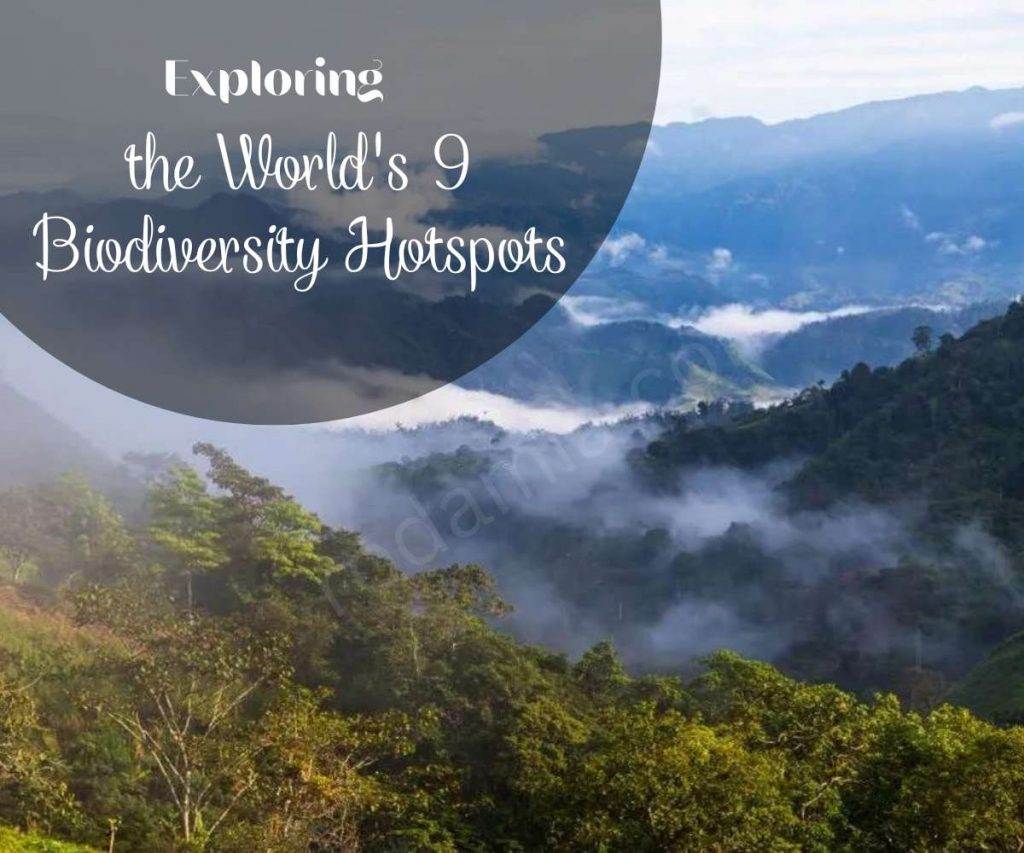The natural world has a myriad of species that are all interconnected in a complex ecosystem. However, many of the threads in this tapestry have sadly become broken beyond repair due to dangers. A number of species have disappeared in the recent years, especially the indigenous ones, and left their ecologies in a void that we must take an active role into fixing.
Here are some of species we’ve lost:
- The Passenger Pigeon: In North America, the sky used to be dark with millions of bird flocks—but excessive hunting led to their complete extinction in 1914. Rather, it becomes an alarming example of how destruction of habitats by human activities annihilates even the most thriving communities.

- The Tasmanian Tiger: Also known as Thylacine, this amazing Australian marsupial was hunted and lost its habitat until the last one was killed in 1936. The extinction of the Thylacine underscores the fragility of island species which frequently are without their own natural enemies and have no options to escape from introduced dangers.

- The Caspian Tiger: The biggest tiger subspecies disappeared from the wild in the 1970s as a result of hunting and environmental devastation. Their extinction represents a missing link of the evolutionary chain of tigers and a loss to the fragile nature balance of the ecosystem of the Caspian Sea region.

- The Pyrenean Ibex: This native Spanish mountain goat became extinct in the year 2000; however, cloning methods were well mastered by scientists that they made one come back to life, but soon after he later died. The Pyrenean ibex story therefore puts emphasis on challenges and limited achievements of even the most efficient scientific interventions aimed at reviving the extinct animals.

These are only some of them, and unfortunately the list may go on. The International Union for Conservation of Nature (IUCN) operates an “IUCN Red List of Threatened Species,” producing a list of millions of species and highlighting ones that are close to extinction. This list is a critical resource to help conservation activities focus on the species in most urgent need of protection.
The reasons for extinction vary, but some of the biggest culprits include:
- Habitat Loss: Human construction, agriculture, and other kinds of human activity which destroy natural environments leave the animals without any place to live. Forest clearing, wetland draining, and urban sprawl are the main causes of habitat degeneration.
- Overhunting and Exploitation: Uncontrolled taking of animals for their flesh, fur, or any other purpose upsets the balance of species in nature. The illegal wildlife trade is a traumatic force to the environment, contributing to the extinction of species for luxury goods or for traditional medication.
- Climate Change: With temperatures increasing, changing weather conditions, and sea levels, ecologies are disrupted. Those species that are adapted to certain climate types may not be able to survive in a rapidly changing world.
- Invasive Species: Native species can be destroyed due to the introduction of non-native species. Predators brought by humans sometimes displace native species, and invasive plants may choke them out.
The extinction of a species is a calamity that brings a ripple effect of misfortunes far beyond the death of the species alone. Each species is a participant in an ecosystem, and their loss starts a chain reaction. Predators balance prey populations, pollinators enable the reproduction of plants, and decomposers decompose dead bodies and return nutrients to the soil. If a species goes extinct, the role it plays in maintaining the ecosystem can be adversely affected, and this can trigger instability which leads to loss of biodiversity.
The best news is that conservation activities are ongoing to preserve endangered species. Organizations around the world are working tirelessly to:
- Protect Habitats: Provision of safe havens for endangered species is accomplished by establishing and enforcing protected areas like national parks and wildlife sanctuaries. Efforts are also being made to restore damaged habitats as well as create links between the disconnected habitats in order to facilitate animal movements.
- Educate the Public: Increasing public awareness of the dangers these species face and the significance of conservation is key. Through educational programs, people can become involved and take part in the conservation movement. In such initiatives ranging from the classroom programs to intriguing documentaries, creating ties with the natural world is fundamental to create interest and action.
- Enforce Laws: Enacting stringent laws against poaching and wildlife trading is vital to safeguard endangered animals. Countries all over the world should allocate resources for wildlife law enforcement and must crackdown on illegal activities. International cooperation is also considered to be a key element in fighting transnational crimes such as wildlife trafficking.
- Captive Breeding Programs: For critically endangered species, captive breeding programs may be the only method of remaining alive. These programs are designed to ensure the long-term sustainability of the populations in these zoos and other controlled environments with the final goal of releasing individuals once conditions are favorable. Captive breeding programs can prolong the time for habitat preservation and lay the groundwork for the development of reintroduction approaches.
- Sustainable Practices: The promotion of sustainable approaches in agriculture, forestry, and fishing may lower the total pressure of humans on the habitat and the exploitation of natural resources which has the potential to harm the wild animals. People can engage in this process by making an informed choice about the products they need and the firms that are committed to sustainability.
The extinction of species is an issue that should not be ignored any longer by us. It is a clear sign that we are part of the natural world and our actions have an impact on it. Through cooperation, we can stop further collapse of the ecosystem and create a world where all species can flourish. Here are some ways you can get involved:
- Know the endangered species in your area and the perils of their existence.
- Collaborate with organizations that are at the forefront of conserving the future of endangered species.
- Reduce your footprint on the planet.
- Push for policies that protect the environment and support sustainable business practices.
Through our individual, however small, actions we can all contribute to preserving the biodiversity of the Earth’s great wealth. Let’s stop any further expansion of the shadow of extinction. The time for action is now.



